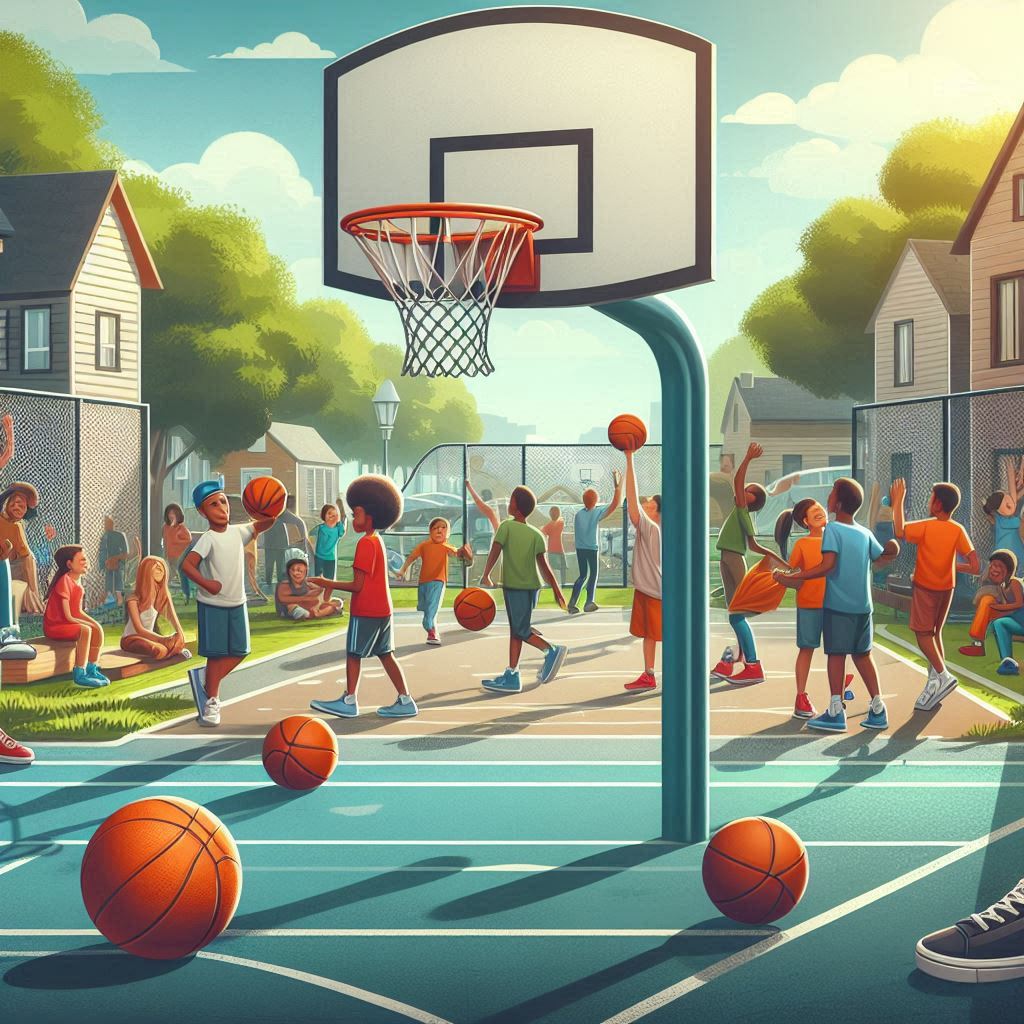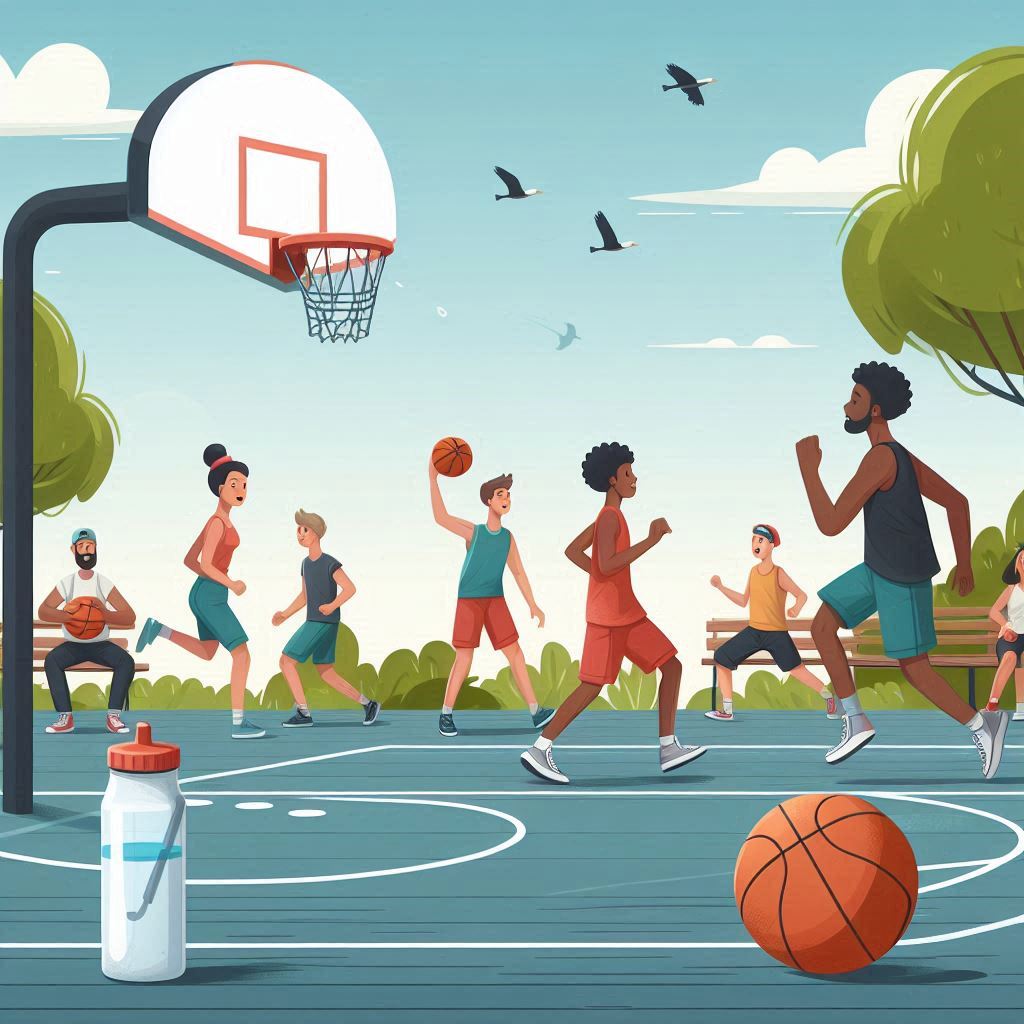Introduction
Basketball is a dynamic and fast-paced sport that requires the right equipment to ensure optimal performance and safety. Whether you are a professional athlete or a recreational player, having the proper basketball equipment can make a significant difference in your game. This article will delve into the essential basketball equipment, its features, and how they contribute to the overall playing experience.
The Basketball
The most fundamental piece of basketball equipment is the basketball itself. Basketballs come in various sizes, materials, and designs to cater to different levels of play and playing environments.
- Sizes:
- Size 7 (29.5 inches): This is the standard size for men’s professional and collegiate basketball. It is also used in high school and middle school boys’ leagues.
- Size 6 (28.5 inches): This size is used in women’s professional, collegiate, and high school leagues. It is also the standard size for boys’ middle school leagues and girls’ youth leagues.
- Size 5 (27.5 inches): This is the standard size for youth basketball, typically used by children aged 9 to 11 years old.
- Materials:
- Leather: Leather basketballs are considered the best for indoor play due to their superior feel and durability. They provide excellent grip and control but are generally more expensive.
- Composite Leather: These basketballs offer a similar feel to leather but are more affordable and versatile. They can be used both indoors and outdoors.
- Rubber: Rubber basketballs are the most durable and are ideal for outdoor play. They are more affordable but do not provide the same level of grip and control as leather or composite leather basketballs.
- Designs and Brands:
- Popular brands like Spalding, Wilson, and Nike offer a variety of basketball designs, each with unique features such as moisture-wicking surfaces and enhanced grip patterns.

Basketball Shoes
Basketball shoes are another crucial piece of basketball equipment, designed to provide support, stability, and traction on the court. Choosing the right basketball shoes can prevent injuries and enhance performance.
- Types:
- High-Top: High-top basketball shoes offer maximum ankle support, making them ideal for players who engage in frequent jumping and quick directional changes. They provide stability but can be heavier.
- Mid-Top: Mid-top basketball shoes strike a balance between support and mobility. They are suitable for players who need some ankle support without sacrificing too much agility.
- Low-Top: Low-top basketball shoes are lightweight and offer the highest level of mobility. They are preferred by players who rely on speed and quick movements, though they offer less ankle support.
- Features:
- Cushioning: Look for shoes with adequate cushioning to absorb impact and reduce stress on the joints. Popular cushioning technologies include Nike Air, Adidas Boost, and Under Armour HOVR.
- Traction: A good traction pattern on the outsole is essential for grip and stability on the court. Herringbone patterns are commonly used for their effectiveness.
- Fit: Proper fit is crucial to prevent blisters and ensure comfort. Basketball shoes should provide a snug fit without being too tight.
- Brands:
- Leading brands like Nike, Adidas, Under Armour, and Puma offer a wide range of basketball shoes, each with unique features and designs to cater to different playing styles.
Basketball Apparel
Wearing the right apparel is important for comfort, mobility, and performance on the court. Here are some essential pieces of basketball equipment in terms of apparel:
- Jerseys and Shorts:
- Materials: Basketball jerseys and shorts are typically made of lightweight, breathable materials like polyester or mesh to keep players cool and dry.
- Designs: Most jerseys have a loose fit to allow for unrestricted movement. Look for moisture-wicking fabrics that help manage sweat.
- Compression Wear:
- Compression garments, such as sleeves, shorts, and tights, provide muscle support and improve blood circulation. They can also reduce the risk of injuries and enhance recovery.
- Socks:
- High-quality basketball socks are essential for comfort and preventing blisters. Look for socks with cushioning in key areas, moisture-wicking properties, and a snug fit.
Basketball Accessories
In addition to the primary basketball equipment, several accessories can enhance the playing experience and improve performance.
- Arm and Leg Sleeves:
- Arm and leg sleeves provide compression, support, and protection. They can help with muscle recovery and reduce the risk of injuries.
- Headbands and Wristbands:
- Headbands and wristbands help manage sweat and keep it out of the eyes and hands. They are especially useful during intense games and practices.
- Basketball Bags:
- A basketball bag is essential for carrying all your basketball equipment. Look for bags with multiple compartments to organize shoes, apparel, and accessories.
- Mouthguards:
- Mouthguards protect the teeth and mouth from injuries during physical play. Custom-fit mouthguards offer the best protection and comfort.

Basketball Hoops and Backboards
For those who play basketball at home or in a recreational setting, having a good-quality basketball hoop and backboard is essential. Here are some considerations:
- Types of Hoops:
- Portable Hoops: These hoops have a base that can be filled with sand or water for stability. They are easy to move and adjust in height, making them ideal for driveway or backyard use.
- In-Ground Hoops: In-ground hoops are more stable and durable than portable hoops. They are installed into the ground and are typically used for more permanent setups.
- Wall-Mounted Hoops: These hoops are mounted on a wall or garage and are a good option for limited space. They offer stability and can be adjustable in height.
- Backboard Materials:
- Polycarbonate: Polycarbonate backboards are durable and affordable, making them suitable for recreational play. They offer good rebound performance.
- Acrylic: Acrylic backboards provide a professional look and good rebound performance. They are more durable than polycarbonate but less expensive than glass.
- Glass: Glass backboards offer the best rebound performance and are used in professional and high-level play. They are more expensive and require proper maintenance.
Conclusion
Having the right basketball equipment is essential for enhancing performance, ensuring safety, and enjoying the game to the fullest. From the basketball itself to shoes, apparel, accessories, and hoops, each piece of equipment plays a crucial role in the overall basketball experience. By investing in quality basketball equipment and understanding its features, players of all levels can improve their skills and enjoy the game with confidence
FAQ on Basketball Equipment
Q1: What are the different types of basketballs available? A: Basketballs come in various sizes and materials. The main types include Size 7 (29.5 inches) for men’s play, Size 6 (28.5 inches) for women’s and youth play, and Size 5 (27.5 inches) for younger children. The materials include leather for indoor use, composite leather for both indoor and outdoor use, and rubber for outdoor use.
Q2: What should I look for when choosing basketball shoes? A: When choosing basketball shoes, consider the type (high-top, mid-top, or low-top) based on your need for ankle support and mobility. Look for features like cushioning for impact absorption, traction for grip, and a proper fit to prevent blisters and ensure comfort.
Q3: How can I maintain my basketball equipment? A: Maintain your basketball by storing it in a cool, dry place and keeping it properly inflated. For shoes, clean them regularly, and store them in a ventilated area. Jerseys and other apparel should be washed according to the care instructions to maintain their quality.
Q4: What is the difference between in-ground and portable basketball hoops? A: In-ground basketball hoops are installed permanently in the ground and offer more stability and durability. Portable basketball hoops have a base filled with sand or water and can be moved and adjusted as needed. They are ideal for driveways and casual play.
Q5: Why are compression garments important for basketball players? A: Compression garments provide muscle support, improve blood circulation, and reduce the risk of injuries. They also help in muscle recovery by minimizing fatigue and soreness after intense physical activity.
Q6: What features should I consider when buying a basketball bag? A: When buying a basketball bag, look for multiple compartments to organize your shoes, apparel, and accessories. Consider the size to ensure it can accommodate all your equipment. Durability and comfort (like padded straps) are also important features.
Q7: How do I choose the right size of basketball? A: The right size of basketball depends on the player’s age and level of play. Size 7 (29.5 inches) is standard for men and boys aged 12 and up, Size 6 (28.5 inches) is for women and boys aged 9-11, and Size 5 (27.5 inches) is for children aged 9 and younger.
Q8: What are the benefits of using a mouthguard in basketball? A: Mouthguards protect your teeth and mouth from injuries during physical play. They help absorb impact and prevent cuts and damage to your lips, teeth, and tongue. Custom-fit mouthguards offer the best protection and comfort.
Q9: Are there eco-friendly options for basketball equipment? A: Yes, there are eco-friendly options for basketball equipment, such as basketballs made from recycled materials, sustainable apparel, and shoes from brands that prioritize environmental responsibility. Look for products with eco-friendly certifications and initiatives.
Q10: How do I improve my basketball game using equipment? A: To improve your basketball game, invest in quality equipment that suits your needs. Use training aids like dribbling goggles, agility ladders, and resistance bands to enhance your skills. Regular practice with the right equipment will help you develop better techniques and performance.




